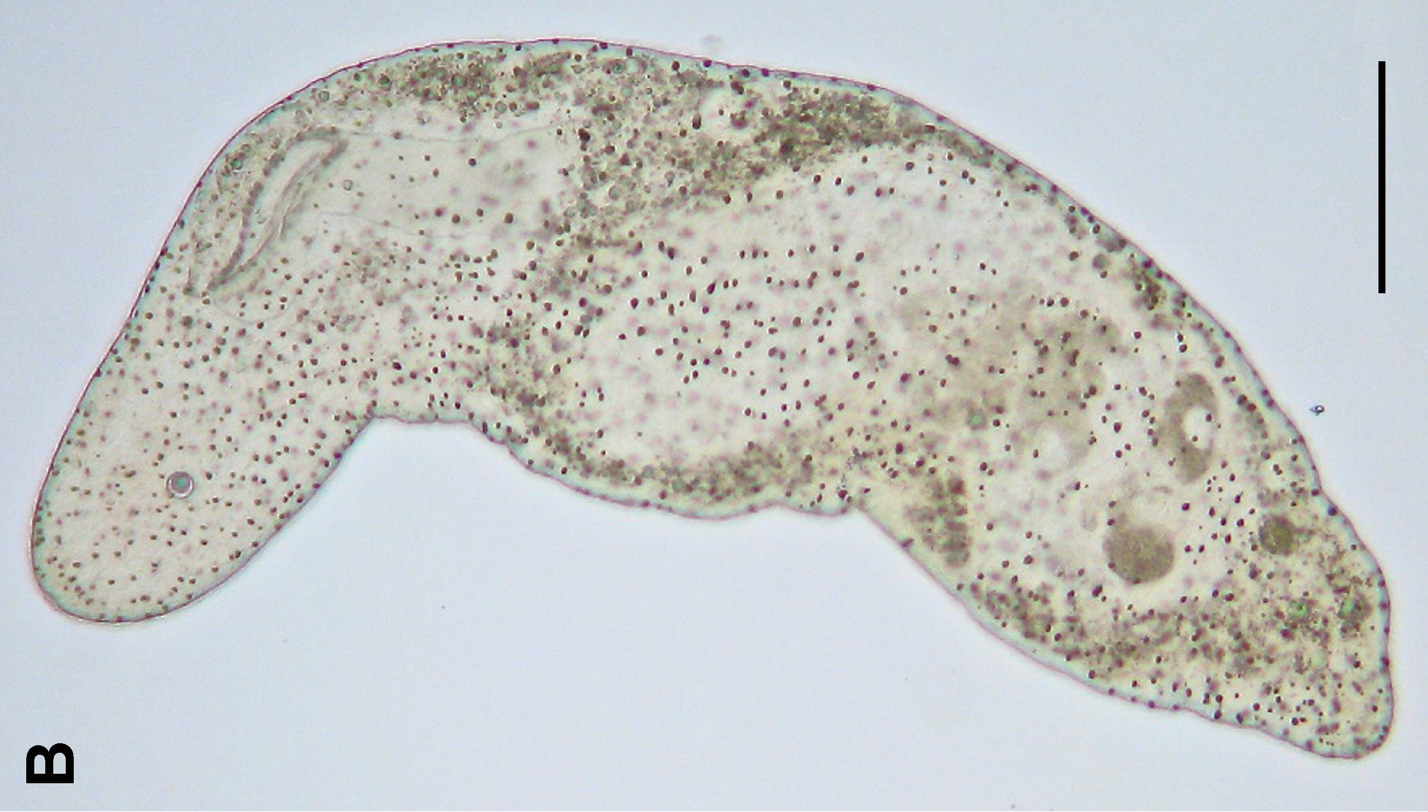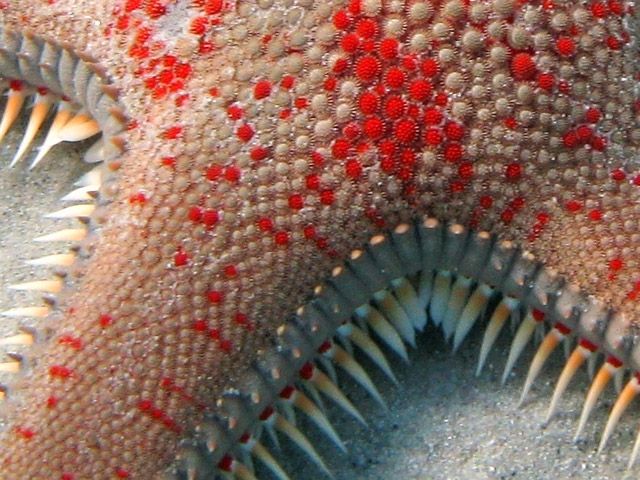|
Callopatiria
''Callopatiria'' is a genus of starfish of the family Asterinidae. Characteristics Members of the genus ''Callopatiria'' have five long, narrow rays, rounded on the upper surface and tapering to a rounded tip. The body is flat on the oral (under) surface but convex on the aboral (upper) surface. The plates on the rays are irregular and are covered by numerous glassy spinelets, finger-like on the primary plates and narrowly conical on the secondary plates. No pedicellaria A pedicellaria (plural: pedicellariae) is a small wrench- or claw-shaped appendage with movable jaws, called valves, commonly found on echinoderms (phylum Echinodermata), particularly in sea stars (class Asteroidea) and sea urchins (class Echinoi ...e are present and the papular spaces are large with numerous papulae. Species * '' Callopatiria cabrinovici'' O'Loughlin, 2009 * '' Callopatiria formosa'' (Mortensen, 1933) * '' Callopatiria granifera'' (Gray, 1847) References Asterinidae {{Asteroidea- ... [...More Info...] [...Related Items...] OR: [Wikipedia] [Google] [Baidu] |
Callopatiria Formosa
Callopatiria formosa, the Grey starfish or Beautiful starfish, is an echinoderm in the family Asterinidae The Asterinidae are a large family of sea stars in the order Valvatida. Description and characteristics These are generally small sea stars, flattened dorsally and bearing very short arms, often giving a pentagonal shape in the body ;example: ... found in South Africa Originally described as ''Parasterina formosa'' by T. Mortensen, in Echinoderms of South Africa (Asteroidea and Ophiuroidea), 1933. References {{Taxonbar, from=Q2608640 Animals described in 1933 ... [...More Info...] [...Related Items...] OR: [Wikipedia] [Google] [Baidu] |
Callopatiria Granifera
''Callopatiria granifera'', the red starfish, is a southern African species of starfish in the family Asterinidae.Branch, G.M., Branch, M.L, Griffiths, C.L. and Beckley, L.E. 2010. ''Two Oceans: a guide to the marine life of southern Africa'' Description The red starfish is a medium-sized orange to red starfish which grows up to across. It has a dorsal surface resembling a tiled roof and its arms taper to rounded ends. Distribution It is found from Namibia to Durban on the South African coast, subtidally Ecology This starfish feeds on food detritus In biology, detritus () is dead particulate organic material, as distinguished from dissolved organic material. Detritus typically includes the bodies or fragments of bodies of dead organisms, and fecal material. Detritus typically hosts commun .... References Asterinidae Animals described in 1847 {{Asteroidea-stub ... [...More Info...] [...Related Items...] OR: [Wikipedia] [Google] [Baidu] |
Asterinidae
The Asterinidae are a large family of sea stars in the order Valvatida. Description and characteristics These are generally small sea stars, flattened dorsally and bearing very short arms, often giving a pentagonal shape in the body ;example: ''Asterians rubens'' (except in some species possessing more than five arms). The periphery of the body is thin and formed by indistinct, tiny marginal plates. They are characterized by their aborale face formed by plates shaped like crescents, sometimes giving a "knitted" appearance to the skin. The abyssal species can be bigger, like those of the genus '' Anseropoda'', which can exceed 45 cm in diameter. Biology Most of the species are small and relatively cryptic: they are often found hidden under rocks or in crevices, for example. Several species have access to a fissiparous asexual reproduction, multiplying their reproductive potential. For that reason, some species of the genera '' Meridiastra'' and ''Aquilonastra'' can so ... [...More Info...] [...Related Items...] OR: [Wikipedia] [Google] [Baidu] |
Animalia
Animals are multicellular, eukaryotic organisms in the biological kingdom Animalia. With few exceptions, animals consume organic material, breathe oxygen, are able to move, can reproduce sexually, and go through an ontogenetic stage in which their body consists of a hollow sphere of cells, the blastula, during embryonic development. Over 1.5 million living animal species have been described—of which around 1 million are insects—but it has been estimated there are over 7 million animal species in total. Animals range in length from to . They have complex interactions with each other and their environments, forming intricate food webs. The scientific study of animals is known as zoology. Most living animal species are in Bilateria, a clade whose members have a Symmetry in biology#Bilateral symmetry, bilaterally symmetric body plan. The Bilateria include the protostomes, containing animals such as nematodes, arthropods, flatworms, annelids and molluscs, and th ... [...More Info...] [...Related Items...] OR: [Wikipedia] [Google] [Baidu] |
Echinodermata
An echinoderm () is any member of the phylum Echinodermata (). The adults are recognisable by their (usually five-point) radial symmetry, and include starfish, brittle stars, sea urchins, sand dollars, and sea cucumbers, as well as the sea lilies or "stone lilies". Adult echinoderms are found on the sea bed at every ocean depth, from the intertidal zone to the abyssal zone. The phylum contains about 7,000 living species, making it the second-largest grouping of deuterostomes, after the chordates. Echinoderms are the largest entirely marine phylum. The first definitive echinoderms appeared near the start of the Cambrian. The echinoderms are important both ecologically and geologically. Ecologically, there are few other groupings so abundant in the biotic desert of the deep sea, as well as shallower oceans. Most echinoderms are able to reproduce asexually and regenerate tissue, organs, and limbs; in some cases, they can undergo complete regeneration from a single limb. Geol ... [...More Info...] [...Related Items...] OR: [Wikipedia] [Google] [Baidu] |
Asteroidea
Starfish or sea stars are star-shaped echinoderms belonging to the class Asteroidea (). Common usage frequently finds these names being also applied to ophiuroids, which are correctly referred to as brittle stars or basket stars. Starfish are also known as asteroids due to being in the class Asteroidea. About 1,900 species of starfish live on the seabed in all the world's oceans, from warm, tropical zones to frigid, polar regions. They are found from the intertidal zone down to abyssal depths, at below the surface. Starfish are marine invertebrates. They typically have a central disc and usually five arms, though some species have a larger number of arms. The aboral or upper surface may be smooth, granular or spiny, and is covered with overlapping plates. Many species are brightly coloured in various shades of red or orange, while others are blue, grey or brown. Starfish have tube feet operated by a hydraulic system and a mouth at the centre of the oral or lower surfa ... [...More Info...] [...Related Items...] OR: [Wikipedia] [Google] [Baidu] |
Valvatida
The Valvatida are an order of starfish in the class Asteroidea, which contains 695 species in 172 genera in 17 families. Description The order encompasses both tiny species, which are only a few millimetres in diameter, like those in the genus '' Asterina'', and species which can reach up to 75 cm, such as species in the genus '' Thromidia''. Almost all species in this order have five arms with tube feet. This order is primarily identified by the presence of conspicuous marginal ossicles, which characterize most of the species. Most members of this order have five arms and two rows of tube feet with suckers. Some species have paxillae and in some, the main pedicellariae are clamp-like and recessed into the skeletal plates. This group includes the cushion star, and the leather star. Families According to the World Register of Marine Species, the following families are included in Valvatida: * family Acanthasteridae Gervais, 1841 * family Archasteridae Viguier, 187 ... [...More Info...] [...Related Items...] OR: [Wikipedia] [Google] [Baidu] |
Addison Emery Verrill
Addison Emery Verrill (February 9, 1839 – December 10, 1926) was an American invertebrate zoologist, museum curator and university professor. Life Verrill was born on February 9, 1839 in Greenwood, Maine, the son of George Washington Verrill and Lucy (Hillborn) Verrill. As a boy he showed an early interest in natural history, building collections of rocks and minerals, plants, shells, insects and other animals. When he moved with his family to Norway, Maine at age fourteen he attended secondary school at the Norway Liberal Institute. Verrill started college in 1859 at Harvard University and studied under Louis Agassiz. He graduated in 1862 with a B.A. He went on scientific collecting trips with Alpheus Hyatt and Nathaniel Shaler in the summer of 1860 to Trenton Point, Maine and Mount Desert Island and in the summer of 1861 to Anticosti Island and Labrador. In 1864 Verrill made reports on mining, or prospective mining, properties in New Hampshire, New York, and Pennsylvani ... [...More Info...] [...Related Items...] OR: [Wikipedia] [Google] [Baidu] |
Genus
Genus ( plural genera ) is a taxonomic rank used in the biological classification of living and fossil organisms as well as viruses. In the hierarchy of biological classification, genus comes above species and below family. In binomial nomenclature, the genus name forms the first part of the binomial species name for each species within the genus. :E.g. '' Panthera leo'' (lion) and '' Panthera onca'' (jaguar) are two species within the genus ''Panthera''. ''Panthera'' is a genus within the family Felidae. The composition of a genus is determined by taxonomists. The standards for genus classification are not strictly codified, so different authorities often produce different classifications for genera. There are some general practices used, however, including the idea that a newly defined genus should fulfill these three criteria to be descriptively useful: # monophyly – all descendants of an ancestral taxon are grouped together (i.e. phylogenetic analysis should c ... [...More Info...] [...Related Items...] OR: [Wikipedia] [Google] [Baidu] |
Starfish
Starfish or sea stars are star-shaped echinoderms belonging to the class Asteroidea (). Common usage frequently finds these names being also applied to ophiuroids, which are correctly referred to as brittle stars or basket stars. Starfish are also known as asteroids due to being in the class Asteroidea. About 1,900 species of starfish live on the seabed in all the world's oceans, from warm, tropical zones to frigid, polar regions. They are found from the intertidal zone down to abyssal depths, at below the surface. Starfish are marine invertebrates. They typically have a central disc and usually five arms, though some species have a larger number of arms. The aboral or upper surface may be smooth, granular or spiny, and is covered with overlapping plates. Many species are brightly coloured in various shades of red or orange, while others are blue, grey or brown. Starfish have tube feet operated by a hydraulic system and a mouth at the centre of the oral or lower su ... [...More Info...] [...Related Items...] OR: [Wikipedia] [Google] [Baidu] |
Family (biology)
Family ( la, familia, plural ') is one of the eight major hierarchical taxonomic ranks in Linnaean taxonomy. It is classified between order and genus. A family may be divided into subfamilies, which are intermediate ranks between the ranks of family and genus. The official family names are Latin in origin; however, popular names are often used: for example, walnut trees and hickory trees belong to the family Juglandaceae, but that family is commonly referred to as the "walnut family". What belongs to a family—or if a described family should be recognized at all—are proposed and determined by practicing taxonomists. There are no hard rules for describing or recognizing a family, but in plants, they can be characterized on the basis of both vegetative and reproductive features of plant species. Taxonomists often take different positions about descriptions, and there may be no broad consensus across the scientific community for some time. The publishing of new data and opi ... [...More Info...] [...Related Items...] OR: [Wikipedia] [Google] [Baidu] |




